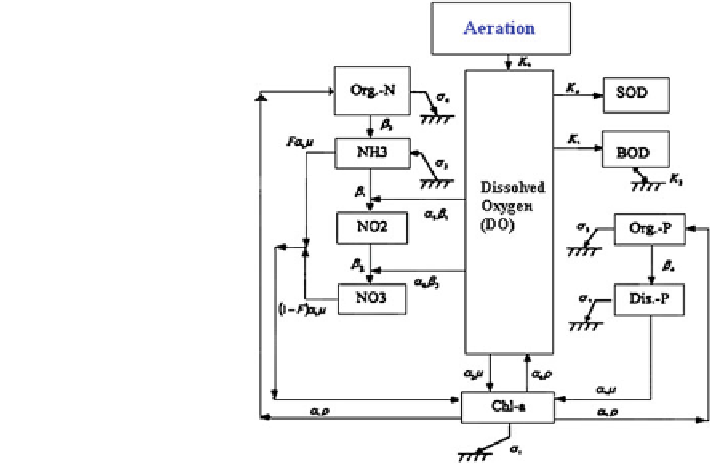Environmental Engineering Reference
In-Depth Information
Fig. 6.1 Schematic diagram
of interacting water quality
state variable (Khodadadi
Darban
2010
)
6.3.1 Boundary Conditions
Boundary conditions need to be speci
ed in the water quality model at four
boundaries: the free surface, bottom, upstream and downstream boundaries. At the
free surface, the wind-induced DO aeration is incorporated into the model using the
equation developed by Banks and Herrera (
1977
).
There is no other mass
uxes at the
bottom are specified specifically for each state variable by settling and benthic
flux through the free surface. The mass
fluxes. The contributions of non-point source loadings from the upstream drainage
area are speci
fluxes at the upstream boundary for each of the state
variables (Khodadadi Darban
2010
).
The surface elevation is speci
ed as mass
ed as a function of time either with harmonic
functions or with time-series data measured at this boundary. In calculating
velocities at the open boundary, the horizontal velocities are linearly extrapolated to
a
fictitious model transecting outside the estuarine mouth, and the advective and
diffusive terms are calculated over this
fictitious model segment.
6.4 Study Area
6.4.1 The First Case Study
Karkheh dam is located 40 km far from West of Andimeshk city and 160 km far
from Ahwaz city. Figure
6.2
shows the location of the Dam. The main objective of

Search WWH ::

Custom Search